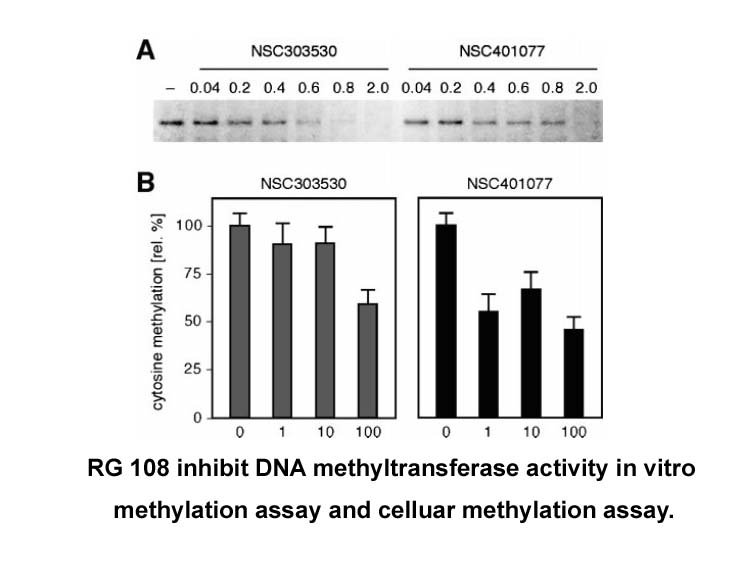Archives
- 2025-12
- 2025-11
- 2025-10
- 2025-09
- 2025-04
- 2025-03
- 2025-02
- 2025-01
- 2024-12
- 2024-11
- 2024-10
- 2024-09
- 2024-08
- 2024-07
- 2024-06
- 2024-05
- 2024-04
- 2024-03
- 2024-02
- 2024-01
- 2023-12
- 2023-11
- 2023-10
- 2023-09
- 2023-08
- 2023-06
- 2023-05
- 2023-04
- 2023-03
- 2023-02
- 2023-01
- 2022-12
- 2022-11
- 2022-10
- 2022-09
- 2022-08
- 2022-07
- 2022-06
- 2022-05
- 2022-04
- 2022-03
- 2022-02
- 2022-01
- 2021-12
- 2021-11
- 2021-10
- 2021-09
- 2021-08
- 2021-07
- 2021-06
- 2021-05
- 2021-04
- 2021-03
- 2021-02
- 2021-01
- 2020-12
- 2020-11
- 2020-10
- 2020-09
- 2020-08
- 2020-07
- 2020-06
- 2020-05
- 2020-04
- 2020-03
- 2020-02
- 2020-01
- 2019-12
- 2019-11
- 2019-10
- 2019-09
- 2019-08
- 2019-07
- 2018-07
-
Valproic acid VPA is a first line treatment for epilepsy
2019-10-15

Valproic tyrosine kinase inhibitors (VPA) is a first-line treatment for epilepsy and bipolar disorder, although its therapeutic mechanism of action is not fully understood. Considerable evidence suggests that VPA can act through the GABAergic system, NMDA receptors, and/or sodium channels (for revi
-
The Lysine mutant is located in
2019-10-15

The Lysine429 mutant is located in the tail region of 5-HT2A, which is predicted to be unstructured. This region has been shown to interact, in vitro, with PSD95 and leads to differences in signaling (Xia et al., 2003). The ASK motif, a component of the tail region, is also important for regulation
-
br Results and Discussion br Materials and Methods br Acknow
2019-10-15

Results and Discussion Materials and Methods Acknowledgements Introduction Inorganic pyrophosphate is generated as a by-product in several enzymatic reactions in cells. These reactions include DNA and RNA synthesis, activation of fatty acids and amino acids, as well as synthesis of the c
-
To assess which export pathway is used by the
2019-10-15

To assess which export pathway is used by the iNOS mRNA, we inhibited CRM1 activity by incubation of DLD-1 ionomycin with LMB. Since LMB covalently and exclusively binds to CRM1, it represents a potent and specific inhibitor of the CRM1 transport activity [38]. Inhibition of CRM1 activity as well as
-
br Methods br Results br Discussion The lowest intra
2019-10-15

Methods Results Discussion The lowest intra-CeA dose of R278995/CRA0450 that prevented the elevations in MRS 2365 pathway reward thresholds associated with nicotine withdrawal was 0.05μg/side (0.1μg total bilateral dose). The total bilateral dose in the present study is 100 times lower than
-
HBX 41108 mass Since cognitive disturbances are core feature
2019-10-15

Since cognitive disturbances are core features of PTSD [3,4], and in some studies COMT Val158/108Met was associated with cognition [10] and hippocampal volume [12], the hypothesis was that carriers of the Met allele will show better cognitive performance compared to Val/Val carriers in PTSD. The ai
-
Estrogens Definition and history The
2019-10-15

Estrogens: Definition and history The term “estrogens” refers to a group of female hormones, including estrone, estradiol, estriol, and estretrol (Fig. 1). Chemically, estrogens belong to the family of organic compounds known as steroids. As such, their core structure is composed of 17 carbon-carbo
-
Introduction Angiotensin II Ang II and Endothelin ET are
2019-10-14

Introduction Angiotensin II (Ang II) and Endothelin 1 (ET-1) are potent vasoconstrictive peptides recognized as key players in many cardiovascular diseases [1]. Cardiac hypertrophy, ischemic arrhythmia, and stroke have been associated to an overstimulation of the angiotensin II type 1 (AT1) recepto
-
In general we observed that the enolase gene with
2019-10-14

In general, we observed that the enolase gene with highest mRNA levels was TVAG_043500, under all three iron concentration conditions. mRNA levels for this gene are very similar in normal and iron rich cultures (73.9 and 78.1 fold change, respectively), and higher in iron depleted cultures (118.3 fo
-
The phenotypes of KD Ddr transgenic
2019-10-14

The phenotypes of KD-Ddr2 transgenic mice were less severe than expected from the results of miDdr2-transfected ATDC5 cells, which indicated that DDR2 might play important roles in endochondral ossification but neither critical nor essential roles in determining total body and skeleton size. The gr
-
We report here that DAPK signaling
2019-10-14

We report here that DAPK signaling pathways play significant roles in OGD-induced neuronal death. Exposure of the Cefpodoxime Proxetil kinase to OGD led to DAPK activation, which then promoted cell death through BimEL overexpression. Furthermore, DAPK-induced BimEL overexpression was mediated by in
-
CDK lacks DNA binding domains and nuclear localization seque
2019-10-14

CDK6 lacks DNA-binding domains and nuclear localization sequences, and therefore will probably be transported to the nucleus by a ‘piggy-back’ mechanism and needs to contact its specific sites indirectly through DNA-binding proteins. Besides NF-κB p65, a further candidate transcription factor is PAX
-
Phylogenetically three related CXC chemokines are
2019-10-14

Phylogenetically three related CXC chemokines are classified as the possible ligands for the teleost CXCR1 and CXCR2. They are referred to as CXCL8_L1 (CXCL8/IL-8/CXCa), CXCL8_L2 (CXCc) and CXCL8_L3 (Alejo and Tafalla, 2011, Chen et al., 2013, Laing et al., 2002, Laing and Secombes, 2004, Nomiyama e
-
MTT results show that both pancreatic cell lines were quite
2019-10-14

MTT results show that, both pancreatic cell lines were quite sensitive to camptothecin (CPT), a well known topoisomerase I poison. Interestingly, CPT does not show any selectivity over cancer cell lines probably due to the duplication times for cancerous (MIA PaCa-2) and immortalized healthy (HPDEC)
-
As the COMT enzyme is primarily
2019-10-14

As the COMT enzyme is primarily related to prefrontal dopamine degradation (e.g., Yavich et al., 2007), the present study supports the notion that prefrontal dopamine modulates retention of fear extinction rather than within-session extinction (Abraham et al., 2014). Consistent with other studies we
14847 records 951/990 page Previous Next First page 上5页 951952953954955 下5页 Last page